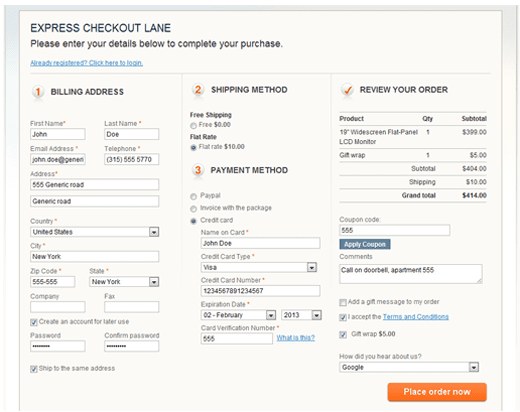Entering the world of e-commerce is a choice full of opportunities, but it is not as easy as it seems. Many people mistakenly believe that e-commerce website design is just a simple setup and no further attention is needed. In fact, if an opportunity sounds too good to be true, it is usually worthy of suspicion.
We analyzed various e-commerce websites and combined with industry research to sort out the top 5 mistakes to avoid when opening an online store. Mastering these will help your e-commerce store occupy a more advantageous position in the fierce market competition.
1.Avoid cluttered category hierarchies
If you plan to open a virtual store and sell a lot of goods, it is crucial to ensure that the product classification and hierarchy are clear. Although you know your products well, your customers may not be familiar with them. Just like vegetables and fruits should not be put together with dog food, make sure the product classification is simple, intuitive and logical.
If you are considering SEO optimization, it is crucial to set the category and product names correctly. Incorrect classification can have long-term consequences.
Action suggestions:
- Reasonably integrate product categories
- Name and organize products in an SEO-friendly way
- Create a sitemap and wireframe to ensure a reasonable structure

2.Don’t neglect safety
With the advent of the internet and computers came hackers, scams, and viruses. From millennials to baby boomers, most people can tell if a website is trustworthy by visual clues.
As an e-commerce store, you need to protect your customers’ sensitive information, such as personal data and credit card numbers. Keeping your website secure not only prevents hackers from stealing data, but also prevents customer lawsuits. While you may think it’s okay to take the risk, your customers don’t. In fact, up to 15% of customers will abandon their purchase if they have doubts about payment security.
Security Action Points:
- SSL Certificate: Show a green “Secure” logo in the URL bar.
- Display security badges prominently during the checkout process.

3.Are you hiding your contact information?
Unlike real-life stores, online stores allow customers to browse easily without distractions, but if they need help or communicate with a real person, make sure to provide clear ways to contact them (chatbots don’t count). Hiding contact information affects your reputation and credibility, and customers want to know they can find real help if they have a problem.
Action Points
- Set up a contact page with a phone number or email
- Display contact information prominently in the header or footer

Is social proof lacking?
People often rely on the experiences of others to form their own judgments and expectations. 92% of consumers will check at least one review before buying online. In the digital age, word of mouth is no longer enough.
If your product is truly great, you need to find people who endorse it, not just brag about it. Attract customers who like your product and ask them to write testimonials or reviews. You can also offer incentives, such as discounts or free samples on their next purchase.
But avoid faking testimonials, which can give your brand a false impression and is worse than having no testimonials at all.
4.Social proof action points:
- Make sure there are enough real testimonials on your website
- Collect real reviews on Google or Trustpilot

5.Is your checkout process too lengthy?
“Would you like to buy a bottle of water for $3?”
“Want to sign up for news about our charity?”
“Want to create a loyalty rewards account?”
“Want to hear about promotions at our other stores?”
These questions can frustrate customers at checkout and ruin their shopping experience. And when shopping online, it’s often easier to abandon a shopping cart. In fact, cart abandonment rates are already quite high (78.65% in 2017). So it’s crucial to reduce any barriers that might prevent customers from completing their purchase.
Also, don’t fake testimonials, which are worse than no testimonials. Fake testimonials often appear contrived and inauthentic, which can easily turn off customers and damage your brand image. Make sure your website displays real customer reviews, such as Google reviews or Trustpilot reviews, to enhance social proof.

Keep these 5 things in mind and your e-commerce site will be a lot better. It may not be perfect, but remember that your site is a work in progress that can be constantly optimized
A/B Testing
Google Analytics
Customer Feedback is a Must
After all, many of the lessons learned came from the e-commerce giants themselves; we’re all learning here.
If you are interested in these contents or want to learn how to optimize your website, please contact airsang design










Add comment